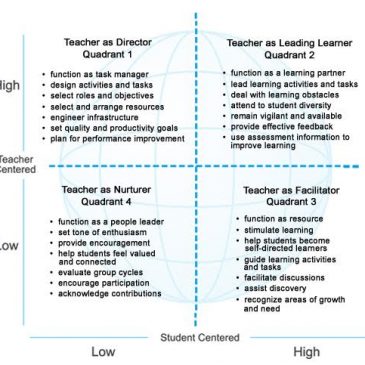I know that you should not use the word paradigm because it is too big a term to define based on the small amount of change you are seeing or documenting. My doctoral advisor would cross it out every time in my drafts about my notion that there was a paradigm shift going on in assessment! You see I had read Thomas Kuhn (1962) who first identified the idea of paradigm shifts. And she, my advisor, was right because the only way a new paradigm takes hold is while the old one is still going strong, so it is not only hard to detect but it overlaps with other paradigms. The only real way to know that a new paradigm has taken hold is to look back at the transition of the old as it collapses over time, and while the new paradigm rises to better satisfy the need for a better explanation for how things work. This happens over many years, so it is hard to see it today. Here is the background on paradigm shift:
A paradigm shift, as identified by American physicist Thomas Kuhn, is a fundamental change in the basic concepts and experimental practices of a scientific discipline. Kuhn contrasted these shifts, which characterize a scientific revolution, to the activity of normal science, which he described as scientific work done within a prevailing framework (or paradigm). In this context, the word “paradigm” is used in its original meaning, as “example” (Greek: παράδειγμα).
The nature of scientific revolutions has been a question posed by modern philosophy since Immanuel Kant used the phrase in the preface to his Critique of Pure Reason (1781), referring to Greek mathematics and Newtonian physics. In the 20th century, new crises in the basic concepts of mathematics, physics, and biology, revitalized interest in the question among scholars. It was against this active background that Kuhn published his work.
Kuhn presented his notion of a paradigm shift in his influential book The Structure of Scientific Revolutions (1962).
Since the 1960s, the concept of a paradigm shift has also been used in numerous non-scientific contexts to describe a profound change in a fundamental model or perception of events, even though Kuhn himself restricted the use of the term to the hard sciences.
So it has been twenty years since I tried to start using that term. I remember that Kuhn was talking about the hard sciences and education, being a social science, is really a soft science, and not really a science. And the rules of science can be much more strictly defined than the rules in teaching and learning. But I do think there is a shift going on, and so let me try to explain.
The Old Learning Paradigm
The old paradigm is a factory-model, industrial-revolution process of educating students as if they would benefit from learning the same thing at the same time and testing them on what they have memorized. What is worse is that we try to educate students in old school buildings, in single classrooms, in single grades with strict hours and behavior rules for all. This paradigm turns out survivors who can sit still for long periods of time, study irrelevant curriculum, pass exams that don’t have anything to do with their lives and forget everything they studied shortly thereafter.
THe New Workplace
So this is not what we need in the workplace, is it? There are not many exams in the new workplace. What we need in workplaces is people who can take an interest in others. We need people who move in and out of new group configurations with ease and grace. We need people who can manage not just a curriculum but who can create the curriculum, define new knowledge that should be in the curriculum. We need creative thinkers who problems solve, interacting with a wide variety of other people, and who can solve real-world problems.
The New Learning Paradigm
Students are bored and disengaged The current need to educate students cannot be met by the old paradigm of teaching and learning. The new learning paradigm has got to be engaging and exciting, filled with choices like a salad bar or a mall, and made most relevant to their current lives. In the new paradigm, we will not be assessing exams that mis-measure student learning, but instead will need to assess student skills and dispositions that lead to happy, healthy, productive lives. We need to assess the harder things to assess like what goes into a successful presentation. And we need to do all of this in an environment that kids want to be in, a fun place, with arts and sports. We need to design new ways of learning, like interdisciplinary learning. We need a place where kids can teach and learn with each other, and a place that fosters community. That is why we need to change our learning, to make a paradigm shift towards, a new way of learning.




